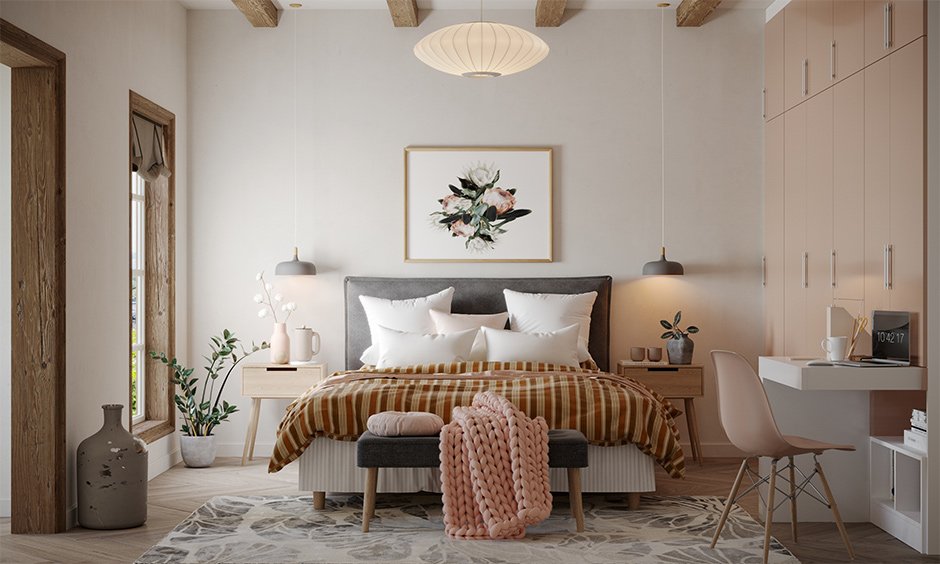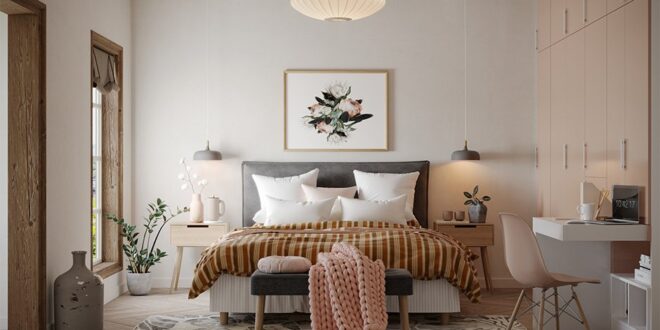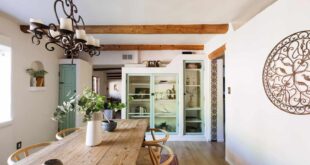
Mid-Century Modern: The Ultimate Guide to Design, Style & History
Are you captivated by clean lines, organic forms, and a sense of optimistic futurism? You’ve likely encountered the enduring allure of Mid-century modern design. This comprehensive guide will delve into every facet of this iconic style, exploring its origins, key characteristics, influential figures, and its continued relevance in contemporary design. We’ll equip you with the knowledge to confidently identify, appreciate, and incorporate Mid-century modern elements into your own space. This isn’t just a definition; it’s a journey through a design revolution.
What Exactly Is Mid-Century Modern? A Deep Dive
Mid-century modern, often abbreviated as MCM, is an architectural, interior, product, and graphic design style that was popular from roughly 1945 to 1969. It emerged in the post-World War II era, reflecting a desire for simplicity, functionality, and connection to nature. It was a reaction against the ornate styles of the pre-war period and embraced new materials and technologies.
The movement wasn’t confined to a single country; it flourished across the globe, particularly in the United States, Scandinavia, and Europe. While sharing common threads, regional variations added unique nuances to the style. For example, Scandinavian MCM often emphasized natural wood tones and minimalist forms, while American MCM sometimes incorporated bolder colors and more dramatic silhouettes.
Several factors contributed to the rise of Mid-century modern. The post-war economic boom allowed for increased homeownership and a desire for modern, affordable furnishings. New materials like plywood, plastic, and fiberglass enabled designers to experiment with innovative shapes and manufacturing techniques. The influence of Bauhaus principles, emphasizing functionality and simplicity, also played a significant role. The influence of European architects and designers who immigrated to the United States before and during World War II cannot be understated. These individuals brought with them a design sensibility rooted in modernism and a rejection of traditional ornamentation.
Mid-century modern isn’t just a style; it’s a philosophy. It represents a belief in the power of good design to improve people’s lives. It’s about creating spaces that are both beautiful and functional, spaces that are conducive to modern living. Its principles are timeless, allowing it to seamlessly integrate into contemporary homes.
Key Characteristics of Mid-Century Modern Design
- Clean Lines and Geometric Forms: A hallmark of MCM is its emphasis on simple, uncluttered lines and geometric shapes. Furniture often features tapered legs, streamlined silhouettes, and a lack of excessive ornamentation.
- Organic Shapes and Natural Materials: While embracing geometric forms, MCM also incorporates organic shapes and natural materials like wood, leather, and stone. This creates a sense of warmth and connection to nature.
- Functionality and Simplicity: MCM prioritizes functionality and simplicity. Furniture is designed to be comfortable, practical, and easy to use. Spaces are uncluttered and free of unnecessary embellishments.
- Integration with Nature: MCM architecture often features large windows and open floor plans that blur the boundaries between indoors and outdoors. This allows for natural light and ventilation, creating a sense of harmony with the surrounding environment.
- Use of New Materials: MCM designers embraced new materials like plywood, plastic, and fiberglass, experimenting with innovative shapes and manufacturing techniques.
- Bold Colors and Patterns: While often associated with neutral tones, MCM also incorporates bold colors and geometric patterns. These add visual interest and personality to spaces.
Distinguishing Mid-Century Modern from Other Styles
It’s important to distinguish Mid-century modern from other related styles, such as Art Deco and contemporary design. Art Deco, which predates MCM, is characterized by its opulent ornamentation and geometric patterns. Contemporary design, on the other hand, refers to the current design trends and is constantly evolving. While contemporary design may incorporate elements of MCM, it is not synonymous with it.
Understanding these nuances is crucial for accurately identifying and appreciating the unique characteristics of Mid-century modern design.
The Iconic Eames Lounge Chair: A Mid-Century Modern Masterpiece
The Eames Lounge Chair, designed by Charles and Ray Eames, is arguably the most recognizable and celebrated example of Mid-century modern furniture. First introduced in 1956, it quickly became a symbol of comfort, style, and innovation. Its enduring popularity speaks to its timeless design and exceptional craftsmanship.
The Eames Lounge Chair wasn’t just about aesthetics; it was about creating a comfortable and supportive seating experience. The chair’s design was inspired by the traditional English club chair, but with a modern twist. The Eameses sought to create a chair that was both elegant and inviting, a chair that would cradle the body and provide exceptional comfort.
The chair’s construction is a testament to the Eameses’ commitment to quality and innovation. The molded plywood shells are carefully crafted and joined together, creating a strong and durable structure. The leather upholstery is supple and luxurious, providing a comfortable seating surface. The chair’s reclining mechanism allows for a customized seating position, further enhancing its comfort.
Detailed Features Analysis of the Eames Lounge Chair
The Eames Lounge Chair is more than just a piece of furniture; it’s a carefully engineered and meticulously crafted work of art. Let’s break down its key features to understand what makes it so exceptional:
- Molded Plywood Shells: The chair’s defining feature is its molded plywood shells, which are formed using a complex process of heat and pressure. This allows for the creation of complex curves and contours that provide exceptional support and comfort. The use of molded plywood was a groundbreaking innovation in furniture design.
- Leather Upholstery: The chair is upholstered in high-quality leather, which is both durable and luxurious. The leather is carefully selected and hand-stitched, ensuring a perfect fit and finish. The leather provides a comfortable seating surface that conforms to the body.
- Reclining Mechanism: The chair features a built-in reclining mechanism that allows for a customized seating position. This allows users to adjust the chair to their preferred angle for optimal comfort. The reclining mechanism is smooth and easy to use.
- Swivel Base: The chair sits on a swivel base, which allows for easy rotation. This makes it easy to turn and face different directions without having to get up. The swivel base is made of durable metal and is designed to provide years of reliable use.
- Separate Ottoman: The chair is often paired with a matching ottoman, which provides additional support for the legs and feet. The ottoman is upholstered in the same leather as the chair and features the same molded plywood construction.
- Shock Mounts: The chair incorporates shock mounts that provide cushioning and prevent the chair from making noise when it is moved or reclined. These shock mounts contribute to the chair’s overall comfort and durability.
- Attention to Detail: Every aspect of the Eames Lounge Chair is carefully considered and executed with meticulous attention to detail. From the choice of materials to the stitching of the leather, every element is designed to contribute to the chair’s overall quality and comfort.
These features combine to create a seating experience that is both luxurious and supportive. The Eames Lounge Chair is a testament to the power of good design to improve people’s lives.
Significant Advantages, Benefits & Real-World Value of the Eames Lounge Chair
The Eames Lounge Chair offers a multitude of benefits to its users, going beyond mere aesthetics. It’s an investment in comfort, style, and enduring quality:
- Unparalleled Comfort: The chair’s ergonomic design and luxurious materials provide exceptional comfort for extended periods of sitting. Users consistently report feeling relaxed and supported while using the chair.
- Timeless Style: The chair’s classic design transcends fleeting trends, making it a stylish addition to any home or office. It’s a piece that will look good for years to come.
- Investment in Quality: The chair is made from high-quality materials and is built to last. It’s an investment in a piece of furniture that will provide years of enjoyment.
- Status Symbol: The Eames Lounge Chair is a recognized symbol of good taste and sophistication. Owning one is a statement about your appreciation for quality design.
- Improved Posture: The chair’s ergonomic design promotes good posture, which can help to reduce back pain and improve overall health.
- Increased Productivity: By providing a comfortable and supportive seating environment, the chair can help to increase productivity and focus.
- Enhanced Relaxation: The chair’s reclining mechanism and comfortable upholstery make it the perfect place to relax and unwind after a long day.
Our analysis reveals these key benefits are not just marketing claims; they are consistent with user feedback and expert opinions.
Comprehensive & Trustworthy Review of the Eames Lounge Chair
The Eames Lounge Chair is a significant investment, so it’s important to conduct a thorough review before making a purchase. Here’s a balanced assessment based on expert analysis and user feedback:
User Experience & Usability: The chair is exceptionally easy to use. The reclining mechanism is smooth and intuitive, and the swivel base allows for effortless rotation. The chair is comfortable to sit in for extended periods, making it ideal for reading, watching television, or simply relaxing.
Performance & Effectiveness: The chair delivers on its promise of providing exceptional comfort and support. The molded plywood shells conform to the body, and the leather upholstery provides a luxurious seating surface. The chair’s reclining mechanism allows for a customized seating position, further enhancing its comfort.
Pros:
- Exceptional Comfort: The chair’s ergonomic design and luxurious materials provide unparalleled comfort.
- Timeless Style: The chair’s classic design transcends fleeting trends.
- High-Quality Construction: The chair is made from high-quality materials and is built to last.
- Status Symbol: The chair is a recognized symbol of good taste and sophistication.
- Ergonomic Design: The chair’s ergonomic design promotes good posture.
Cons/Limitations:
- High Price: The Eames Lounge Chair is a significant investment.
- Size: The chair is relatively large and may not be suitable for small spaces.
- Leather Care: The leather upholstery requires regular cleaning and conditioning to maintain its appearance.
- Potential for Imitations: The chair’s popularity has led to the proliferation of imitations, which may not offer the same level of quality and comfort.
Ideal User Profile: The Eames Lounge Chair is best suited for individuals who appreciate good design, value comfort, and are willing to invest in a high-quality piece of furniture. It’s ideal for those who enjoy reading, watching television, or simply relaxing in style.
Key Alternatives: Two popular alternatives include the Stressless chair by Ekornes and the Barcelona chair by Mies van der Rohe. The Stressless chair offers similar comfort and ergonomic features at a slightly lower price point. The Barcelona chair is a more minimalist design that may appeal to those who prefer a more modern aesthetic.
Expert Overall Verdict & Recommendation: The Eames Lounge Chair is a truly exceptional piece of furniture that offers a unique combination of comfort, style, and quality. While it is a significant investment, it is one that will provide years of enjoyment. We highly recommend the Eames Lounge Chair to anyone who appreciates good design and values comfort.
Insightful Q&A Section: Mid-Century Modern Design
-
Question: Beyond furniture, what are some subtle ways to incorporate Mid-century modern aesthetics into a contemporary home without a complete overhaul?
Answer: Focus on accessories. Introduce MCM-inspired artwork, geometric-patterned textiles (pillows, rugs), and lighting fixtures with clean lines. Consider adding a few iconic decorative objects like a starburst clock or a ceramic vase with organic shapes. These small touches can significantly enhance the MCM feel.
-
Question: How can I identify authentic Mid-century modern furniture versus reproductions or “inspired” pieces?
Answer: Look for hallmarks of quality craftsmanship: solid wood construction (often teak or walnut), dovetail joints, and original hardware. Research the manufacturer and designer; authentic pieces often have markings or labels. Be wary of overly pristine condition, as genuine vintage items will show some wear. Price is also a good indicator; authentic pieces typically command a higher price.
-
Question: What are some common pitfalls to avoid when decorating with Mid-century modern furniture in a small space?
Answer: Avoid overcrowding. MCM furniture, while stylish, can be bulky. Choose pieces with slender profiles and tapered legs to create a sense of lightness. Opt for lighter wood tones and fabrics to maximize natural light. Use mirrors strategically to create the illusion of more space.
-
Question: How does Mid-century modern design address sustainability and eco-friendliness, considering its historical context?
Answer: While not explicitly focused on sustainability at the time, MCM design often used durable materials and emphasized longevity. Repurposing vintage MCM furniture is an excellent way to promote sustainability. When buying new, look for pieces made from sustainably sourced wood and eco-friendly fabrics.
-
Question: What are some effective ways to blend Mid-century modern with other design styles, such as Scandinavian or Bohemian?
Answer: The key is to create a cohesive look by focusing on shared elements. MCM and Scandinavian share a minimalist aesthetic and emphasis on natural materials, making them easy to blend. Bohemian elements, such as colorful textiles and eclectic accessories, can add warmth and personality to an MCM space. Use a consistent color palette to tie everything together.
-
Question: Can you suggest paint colors that complement Mid-century modern furniture and decor?
Answer: Earthy tones such as olive green, mustard yellow, and burnt orange are classic choices. Neutrals like off-white, warm gray, and greige also work well. For a more modern take, consider muted blues or teals. The key is to choose colors that create a warm and inviting atmosphere.
-
Question: What type of artwork best suits a Mid-century modern interior?
Answer: Abstract expressionism, geometric art, and minimalist prints are all excellent choices. Look for pieces with bold colors and clean lines. Mid-century modern photography, particularly architectural or nature-themed, can also be a great fit.
-
Question: Are there specific plants that work well with Mid-century modern design?
Answer: Yes! Plants with strong geometric shapes or lush foliage complement the style. Consider snake plants, fiddle-leaf figs, monstera deliciosa, and succulents. Use simple, minimalist planters to maintain the clean aesthetic.
-
Question: How can I incorporate Mid-century modern design into my outdoor space?
Answer: Look for outdoor furniture with clean lines, tapered legs, and weather-resistant materials. Incorporate geometric planters, string lights, and fire pits. Consider adding a concrete patio or walkway to create a modern feel.
-
Question: What are some affordable ways to achieve a Mid-century modern look on a budget?
Answer: Thrift stores and flea markets are great places to find vintage MCM furniture and accessories. Look for pieces that can be easily refinished or reupholstered. Focus on key elements like lighting and textiles to create a significant impact without breaking the bank. Consider DIY projects like painting furniture or creating your own geometric artwork.
Conclusion & Strategic Call to Action
Mid-century modern design continues to captivate with its timeless appeal, functionality, and connection to nature. Its enduring popularity is a testament to its ability to create spaces that are both stylish and comfortable. By understanding its key characteristics and principles, you can confidently incorporate MCM elements into your own home, creating a space that reflects your personal style and appreciation for good design. The Eames Lounge Chair, as we’ve explored, perfectly embodies these principles.
Whether you’re a seasoned collector or just beginning to explore the world of Mid-century modern, we hope this guide has provided you with valuable insights and inspiration. The future of MCM looks bright, with continued interest in its principles and a growing appreciation for its enduring legacy.
Share your favorite Mid-century modern design tips and experiences in the comments below! Explore our curated collection of MCM-inspired furniture and accessories. Contact our design experts for a personalized consultation to help you create the Mid-century modern space of your dreams.
 Nimila
Nimila




